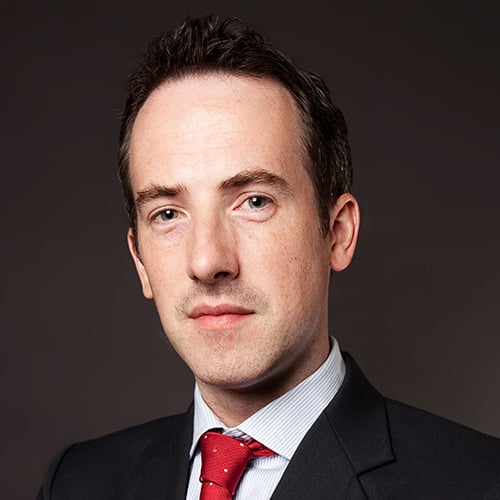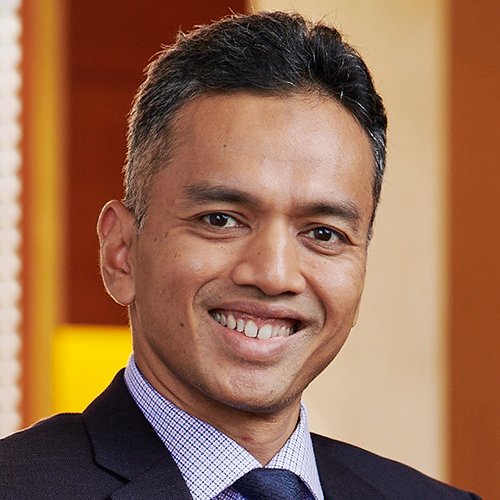The oil-rich Middle East, known for its abundant natural resources, is now making significant strides in establishing a strong presence on the global financial stage. While the competition for the title of Asia-Pacific’s financial centre intensifies between Hong Kong and Singapore, the United Arab Emirates (UAE) and Saudi Arabia are engaged in a competitive race of their own in the Middle East, vying for global attention after years of meticulously building their financial foundations. This growing prominence is bolstering the confidence of corporations, encouraging them to further invest in the Middle East and expand their operations in the region.
In addition to hosting prominent global events like the COP28 climate change conference in Dubai in 2023 and the World Economic Forum meeting in Saudi Arabia, both the UAE and Saudi Arabia are doubling down their efforts to create an attractive environment to draw more foreign investments as part of their strategy to diversify their local economies and curb their heavy reliance on oil revenues. This includes implementing various initiatives and reforms aimed at facilitating foreign direct investment and encouraging the establishment of international businesses in the region.
The UAE boasts an impressive total of 46 free zones, with Dubai alone accounting for 28 of those. These free zones offer a comprehensive range of commercial incentives as highlighted by the UAE’s Ministry of Economy. These incentives include provisions for complete foreign ownership, exemption from corporate and income taxes, and other attractive benefits. The establishment of these free zones has been a strategic move by the UAE to attract foreign investment, foster economic diversification and create favourable conditions for businesses to thrive.
On the other hand, Saudi Arabia has taken significant steps in 2023 by setting up four new special economic zones. These zones specifically target 10 industries, such as logistics, medical technology and the automobile supply chain and assembly sectors, offer tax benefits and utility concessions. Notably, competitive electricity rates are among the utilities provided, enabling companies operating within these zones to access cost-effective resources and enhance their competitiveness.
As well, the strategic locations of both countries, coupled with convenient time zones, enable them to make timely decisions within trading hours across both East Asia and Europe markets, as well as short-distance travel to access the two regions. In addition, both Saudi Arabia and the UAE are backed by ample amounts of capital injections by wealthy investors that bolster various financial instruments.
Booming wealth, investment
UAE and Saudi Arabia have also seen an uptick in the inflow of high-net-worth individuals. There were 4,500 estimated new millionaires in the UAE in 2023, according to a report conducted by investment migration consultant firm Henley & Partners, 4.5 times more than the average yearly improvement, with the country’s three key cities of Dubai, Abu Dhabi and Sharjah reporting 84%, 70% and 62% growth in their millionaire populations in 2022, respectively. And in Saudi Arabia, a Credit Suisse report notes, after inflation adjustment, there were 354,000 millionaires in 2022 – up almost 28% from 2021.
Along with the wave of affluent individuals, recognition of the Middle East market’s growing prominence is seen in the increase in the number of institutional investors opening local units to trade traditional and alternative assets, particularly in the UAE.
Assets under management in Abu Dhabi, as reported by the Abu Dhabi Global Market (ADGM) international financial centre (IFC), surged 35% last year, in accordance with the number of new operational entities of global names boosting 32% to 1,825, with new investment firms and hedge funds upsized the most.
“Several global financial institutions and investment banks based within the ADGM, such as JP Morgan and BNP Paribas, are expanding their service and product offerings, as well as growing their teams to improve capabilities,” states an ADGM announcement, “standing as a testament to the talent growth being achieved within the IFC.”
Abu Dhabi isn’t the only city in the UAE that appeals to the investment industry. Dubai’s stable business environment and agile regulations, the Dubai International Financial Centre (DIFC) points out, have attracted the attention of hedge and sovereign funds from traditional hubs like London and New York. This market is further consolidated with the pool of talent the country has attracted through its golden visa scheme, which recently eliminated the sponsor requirement to streamline a foreign expatriate’s possible long-term residency in the UAE.
Saudi enticements, ambitions
As the competition between the UAE and Saudi Arabia intensifies, the latter has taken steps to attract talent and international companies. Apart from introducing five new premium residency categories to attract foreign talent to their market, Saudi Arabia is urging global corporations to establish branches within its borders.
A new regulation implemented in Saudi Arabia this year requires foreign companies to set up regional headquarters to be eligible for future government contracts. This move aligns with the global appetite to participate in the country’s ambitious construction projects, including The Line project, a smart city proposed to run solely on renewable energy. Many of these initiatives are led by the Public Investment Fund, a Saudi sovereign wealth fund worth US$700 billion, making it one of the largest in the world.
.png)
Saudi Arabia has set an ambitious target of attracting 480 multinational regional headquarters by 2030. This programme has gained momentum with the participation of over 200 firms, including IHG Hotels & Resorts, Deloitte and Huawei, which have committed to establishing their regional bases in Saudi Arabia, as announced by Saudi Arabian investment minister Khaled Al-Falih.
While these international companies are enticed by the potential long-term returns and attractive incentives, such as a 30-year exemption from corporate income and withholding taxes, they must also navigate operational hurdles that may arise in the new business environment.
Hurdles, problems
Under Saudization, or the Nitaqat programme, aiming to ramp up local employment, at least 30% of the workforce in every company in the country needs to either be Saudi citizens or that of other Gulf Cooperation Council (GCC) countries – Bahrain, Kuwait, Oman, Qatar or the UAE. By contrast, in the UAE where the localization programme, Emiratization, is also implemented, companies are required to maintain at least one Emirati in every 50 employees.
Adopting new business environment and talent acquisition, according to PricewaterhouseCoopers, are two major problems confronted by Saudi Arabian companies. Although the headquarter programme participants are spared from Saudization for the first 10 years, 17% of Saudi companies surveyed by recruitment researcher TASC claimed that they are scrambling for human resources already, given the compliance on local recruitment.
The UAE also faces a manpower gap, as indicated by a survey conducted by Cooper Fitch, a recruitment agency covering the GCC region. According to the survey, 27% of companies expressed concerns about the availability of talent in 2023. This issue is expected to worsen in 2024, with a noticeable inadequacy of qualified professionals in management, leadership and sales roles, which hinders the UAE in its ambition of becoming a global office hub.
As well, raising UAE’s corporate tax rate to 9% starting from this year impacted the market, despite the fact that it is still one of the lowest among global financial centres with free zones being exempted. Companies, according to Deloitte projections, will recalibrate the purchasing costs and sales pricing in the region, which can lead to changes in business strategies.
Another issue weighing on the business operation in Middle East is climate risk. The UAE was recently struck by the heaviest record rainfall in 75 years, forcing the cancellation of over 1,400 flights in Dubai International Airport, the world’s second-busiest airline hub. Other than the thousands of passengers left stranded, blocked roads and inundated communities caused the suspension of business activities.
And, in the same month last year, Saudi Arabia experienced severe precipitation and strong winds, particularly in the holy city Mecca, a previously extremely rare occurrence in the country.
Going beyond competition
As the Middle East as a whole moves away from it huge economic dependence on oil and gas, the UAE and Saudi Arabia still need each other to maximize any benefits amid this crucial economic transformation. The UAE can’t succeed if the largest oil reserve falls apart, a Royal United Service Institute report notes, while, in return, Saudi Arabia’s capital sourcing needs the UAE to attract funds from the United States and China.
“In sum, the era of Saudi Arabia and the UAE working hand in glove is likely over, and their bilateral relationship is set to be primarily characterized by pragmatism like it was before 2015,” the report concludes. “As they navigate challenging times ahead, spats and dust-ups – particularly in the economic arena – can be expected, but Riyadh and Abu Dhabi will remain tied to each other for years to come.”





.jpg)



